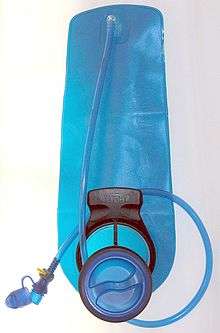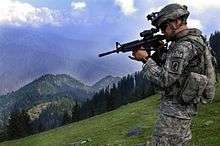Hydration pack

A hydration pack is a type of hydration system built as a backpack or waistpack containing a reservoir or "bladder" commonly made of rubber or flexible plastic. The reservoir contains a capped mouth for filling with liquid and a hose that allows the wearer to drink hands-free. Most hoses end with a "bite valve" that opens when the user bites down on it; the valve may be protected by a dust cover. Some hydration packs are insulated to keep water from freezing or becoming warm.
Sizes
The size of the reservoir can vary widely depending on brand and the purpose of the hydration pack. Some hydration packs are extremely small and minimalist, designed to add as little load as possible while running or cycling, while others are more suited for backpacking and extended hikes, equipped with huge bladders. Bladder sizes can range from as little as 50 ounces all the way up to 400+ ounce packs.
Some hydration packs include additional storage space in the form of zipper pockets or mesh pouches, while others are simply a means to affix the hydration bladder to the back for easy carrying. Pressurized hydration bladders are included on some models which allow the hose to spray water or even move water through an in-line filter before drinking.

Hydration packs are commonly used for outdoor recreational activities, such as hiking, bicycling, and kayaking, as well as for military maneuvers, often dubbed the Camelback hydration system or camel bag in this context.
Running
Running (or trail running) hydration packs are the smallest and lightest, many under 2 litres and most under six litres. They sit low on the back (or the waist area). Compression straps across the top of your body are common as are hip belts.
Cycling
Cycling hydration packs are six to ten litres sitting high on your back. Compression straps across the body are not necessary although weight still needs to be relatively low positioned.
Military, Trekking and Hiking
Daypacks are small - averaging ten to thirty litres, whereas Trekking and Hiking hydration packs are generally the largest and heaviest. Thirty five up to sixty five litres and above are common. Compression straps across the body and shoulders as well as hip belts are necessary.
| Hydration Pack | ||||||
|---|---|---|---|---|---|---|
|


